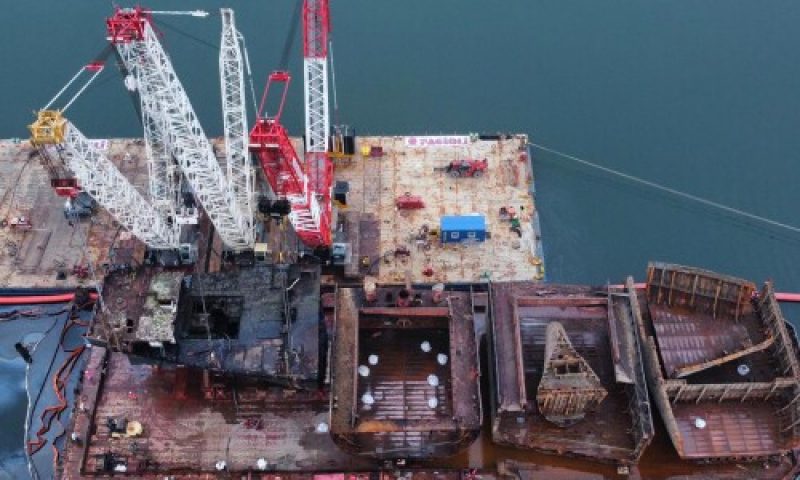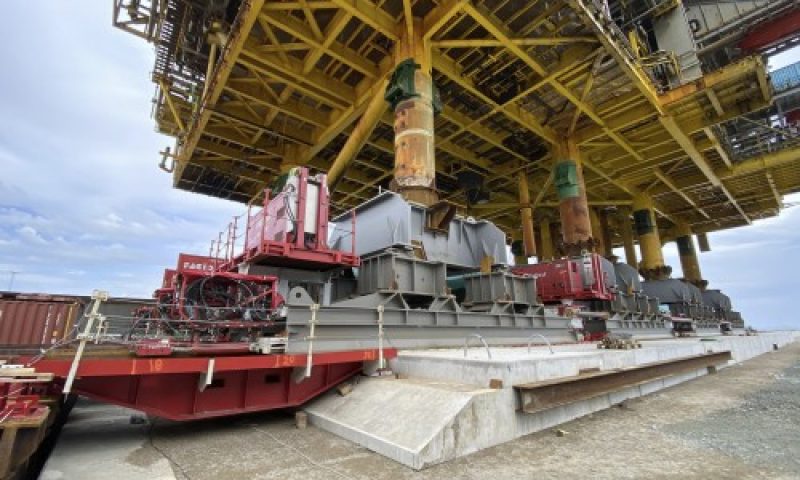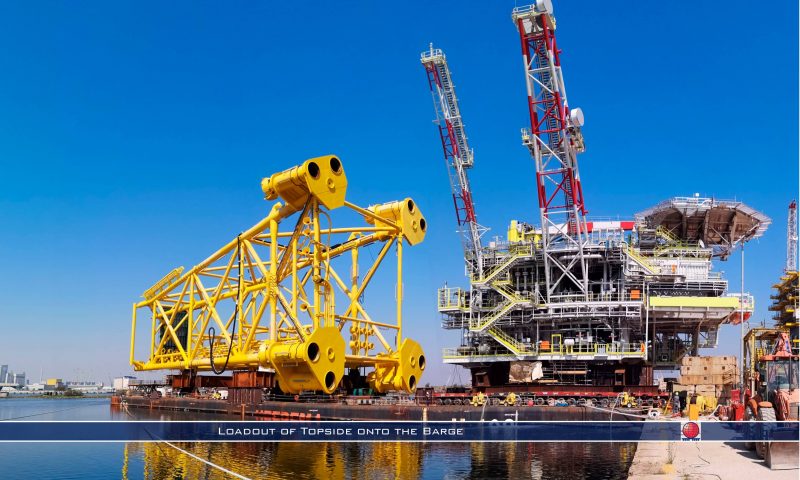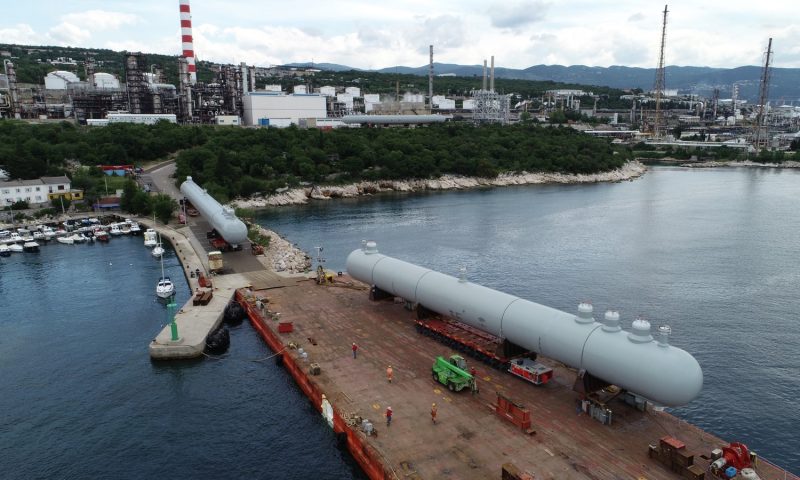
Fagioli installs STS Crane at Quetzal Terminals in Guatemala
Fagioli was called for the skidding operation of a 1,030 ton STS crane in Guatemala by means of skid shoes, skidding tracks and hydraulic jacks.
The new crane was due to be skidded for about 300 m to be positioned onto its rails, onto the quay area. Fagioli used No. 8 skid shoes (1,000 ton capacity each) equipped with Power Packs’ Units and hydraulic push-pull system. Skid shoes were fixed onto the ground and positioned underneath the transport beams welded to the STS crane.
The STS crane was skidded and skid shoes reallocated to cover the entire distance up to the quay.
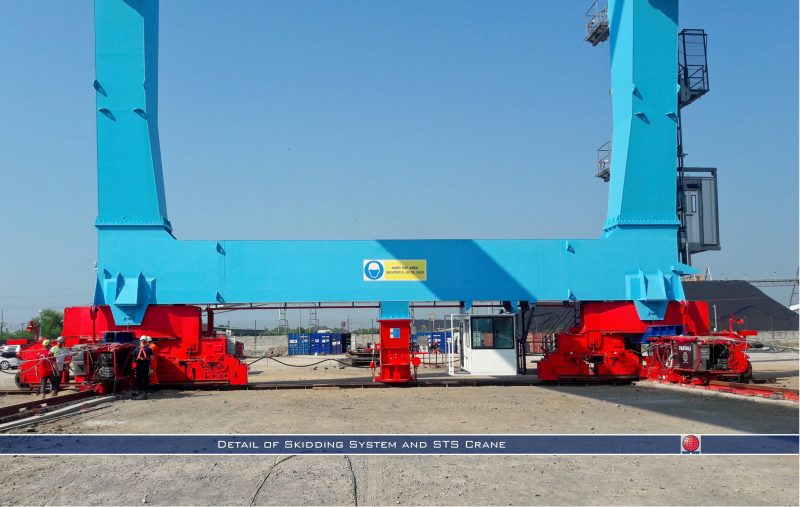
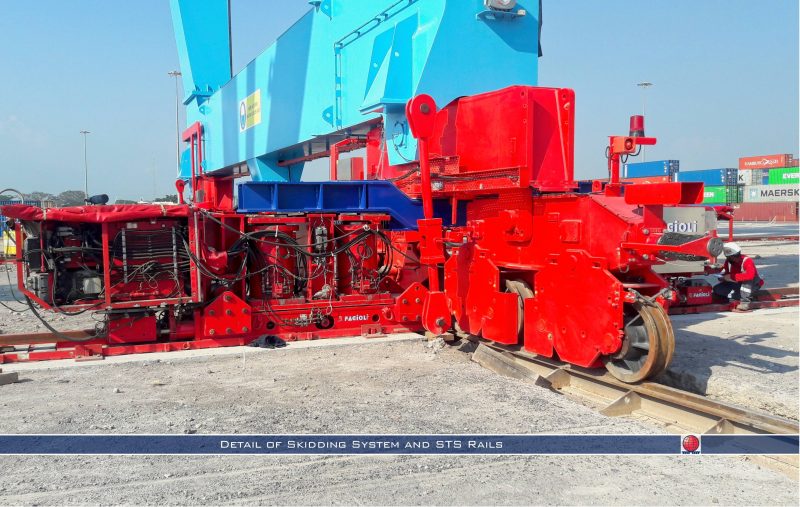
The new crane is part of APM Terminals new facility in Guatamala which began operations less than a year ago.
APM Terminals is hailing its terminal in Puerto Quetzal as a resounding success, attracting four new vessel strings to serve Guatemala’s export/import industries and delivering “the highest productivity port operations in the country.”
“Guatemala City is now served faster by a Pacific port that is only 98 kilometres away compared to Atlantic coast ports which are five hours away. Equally important, Guatemala’s truckers for the first time in years can now make multiple trips every day into and out of the port thanks to APM Terminals Quetzal’s highly efficient, fast trucker turntime procedures which average 30 minutes,” APM Terminals noted.
The 25-year concession to develop a container terminal at Puerto Quetzal was originally granted to Spain’s Grup TCB in 2013. The original plan for the terminal to open in 2016 with four Liebherr STS crane, a Liebherr mobile harbour crane and 12 RTGs from Konecranes, delivering a capacity of 400,000 TEU in Phase I and 700,000 TEU in Phase II. Much of the equipment was to be purchased with loan financing, with Grup TCB investing US$43.2M.
APM Terminals then took over the development when it purchased Grup TCB in 2015 (with the sale completed in 2016) and the project has been scaled back somewhat in the first phase. It is still an 85%/15% joint venture between APM Terminals and The IFC – World Bank, but APM Terminals has invested US$180M so far and has planned for an additional US$145 M to be invested over a 19 year period. The terminal opened with two STS crane and five RTGs 6, and a capacity of 340,000 TEU in Phase I.
Nevertheless, the new terminal is a significant step forward for Guatemala. Speaking at the inauguration ceremony, APM Terminals Chief Commercial Officer, Henrik Lundgaard Pedersen said, “Every country wants access to a competitive port – and we are proud to design our new container terminal around the country’s growth needs and Guatemalan businesses. APM Terminals Quetzal will play a strategic role in Guatemala’s economic future and competitiveness in world markets. The container terminal you see here is a Guatemalan success story – run by Guatemalans with 170 new jobs created here and hundreds of indirect jobs for the future.”
Guatemala has a container port at Barrios on its Atlantic Coast, but APM Terminals said most economic development is concentrated along the Pacific coast. “As the country’s newest Pacific gateway port, APM Terminals Quetzal is ensuring exports of sugar, fruits and vegetables, coffee, grains, fertilizer, fish, cotton, textiles and tobacco which represent half of Guatemala’s exports are successfully handled to the highest quality standards”.
APM Terminals has high expectations for the future. It notes that, with 16.5 million people, Guatemala has the largest population in Central America. The IMF is projecting economic growth will hit 3.2% in 2017 and 3.5% in 2018.This should lift port volume from the 1.57M TEU handled in 2016. APM Terminals notes this is more than Costa Rica’s 1.34M TEU, where APM Terminals is currently building a much larger facility.




